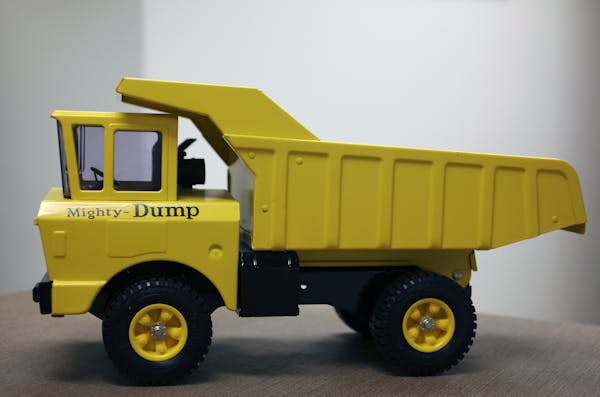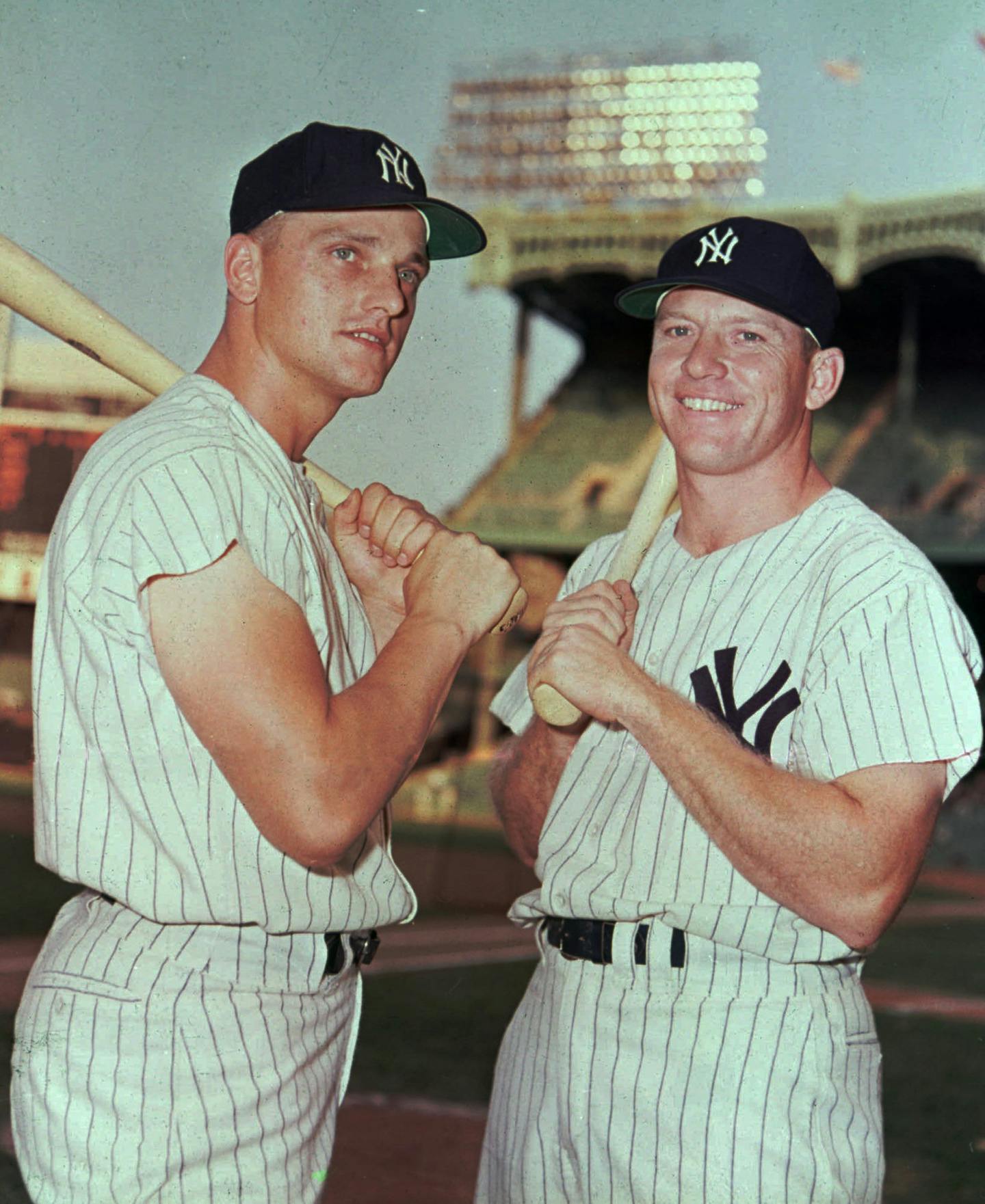Listen and subscribe to our podcast: Via Apple Podcasts | Spotify | Stitcher
The iron ore buried beneath northern Minnesota changed the course of American history by fueling the country's steel production. But the Iron Range exported more than just raw materials.
Many natives of Hibbing, a modest-sized city on the Mesabi range, have made substantial contributions to American culture. The city's unusually long list of prominent one-time residents includes musician Bob Dylan, former Gov. Rudy Perpich, basketball star Kevin McHale, baseball great Roger Maris, wine magnate Robert Mondavi and food industry pioneer Jeno Paulucci.
"It might be in the water?" quipped reader Frank Allen of nearby Grand Rapids, who wanted to know why Hibbing has produced so many boldface names. He sought answers from Curious Minnesota, the Star Tribune's reader-driven community reporting project.
The answer lies partly in Hibbing's history as a mining boomtown that drew a diverse population of hard-working immigrants to this remote area in the early 20th century. Taxes paid by lucrative mining operations helped develop a world-class schooling system in Hibbing, producing many prominent alumni.
'There is iron under me'
In the early 1890s, a prospector emerged from his campsite in northeastern Minnesota and said to the dozens of men in his travel party: "I believe there is iron under me. My bones feel rusty and chilly."
Frank Hibbing's bones were right.
The crew didn't have to dig far into that frozen ground to find reddish-orange earth the consistency of baking flour. The iron ore spurred the development of a robust town that was home to more than 43 different ethnic groups. And with mining money came innovation: indoor plumbing, streets lit by electricity, a Carnegie library.
The golden goose of this growing burg was a massive mine that is now known as the Hull Rust Mahoning Mine. The expanding mine was so important that the entire village of Hibbing was moved 2 miles south starting in 1919 — using logs and steel wheels — so miners could access more iron deposits.
"Mining and forestry logging jobs were plentiful," said Hibbing Mayor Pete Hyduke. "But, wanting more and better opportunities for their children, they put high emphasis on educational opportunities by creating outstanding school systems."
Many of these new Americans were determined to build a better life for the next generation, according to retired Hibbing High School history teacher Craig Hattam.
"Immigrant strength," he said. "Your parents aren't going to let you fail."
Educational monument
Residents put great care into designing a one-of-a-kind high school that remains a prominent local landmark. Hibbing High was built in 1920 for $4 million, a significant undertaking made possible by taxes paid by the Oliver Mining Co.
The four-story Jacobethan-style building with red bricks and gray stone sits on 10 acres in the heart of Hibbing. It features ornate molded ceilings, decorative tile floors and elaborate murals. It claims to be the first school in the country to have an indoor swimming pool.
Luxurious details abound, from Belgian glass chandeliers to fire extinguishers encased in Tiffany glass.
"These people were exposed to things like fine literature and the arts, technology in the classrooms labs and things of that nature," said Aaron Brown, who teaches on the Hibbing campus of Minnesota North College and is writing a book about former Hibbing Mayor Victor Power.
In 1925, a journalist from the New York Times described Hibbing High as both "grand as a cathedral" and a "white elephant in the land of buffalo." It had spaces designated for physics, drafting, art, sewing, cooking, music, automotive work, printing, typewriting, metalworking and botany.
The school served students from kindergarten through two years of junior college at a time when a lot of kids in the country didn't make it past eighth grade, Hattam said.
For decades, Hibbing recruited the top teachers from Duluth State Teacher's College, and old yearbooks show instructors with impressive alma maters: Stanford, Notre Dame, Massachusetts Institute of Technology.
"They could attract them because — for most of the 20th century — Hibbing paid the highest salaries and had the best benefits for a five-state region," said Mary Palcich Keyes, a Hibbing native who gives dozens of tours a year of Bob Dylan landmarks and Hibbing High School.
Hibbing's famous alumni
Nobel Prize-winning musician Bob Dylan, who was born in Duluth and raised in Hibbing, is the city's most famous former resident. The 1959 Hibbing High graduate's success earned him a trophy-case display on the school's main floor, with records, photographs, yearbooks and a proclamation for Bob Dylan Day in Minnesota.
Dylan, then known as Robert Zimmerman, was a bit of a misfit as a student. When his band rocked the auditorium, the principal cut the cord on the noise, according to the book "Positively Main Street" by Toby Thompson. He favored the front row in English class and credited teacher B.J. Rolfzen with teaching him "everything I know," as documented in a 1969 Village Voice profile.
Kevin McHale is arguably No. 2 on the list of famous Hibbing High graduates.
He was named Minnesota Mr. Basketball in 1976 while playing for Hibbing High's Bluejackets. McHale played basketball at the University of Minnesota, then had a storied career with the Boston Celtics before returning to his home state to coach the Timberwolves.
He still pops up in his hometown — whether it's on the golf course or at Sammy's Pizza.
Jeno Paulucci was among the first graduates to make a name for himself.
A 1935 graduate, Paulucci was a grocer in Hibbing when he developed Chun King, a brand of canned, ready-made Chinese food. He would go on to do the same with pastas and Mexican food through Michelina's Inc., which he ran until he died in 2011 in Duluth. Paulucci documented the shabby conditions of his childhood in his book, "Jeno: The Power of the Peddler."
"It started a fire in my gut that's never been extinguished, and that wouldn't be there if I'd been born in some comfortable middle-class household," he wrote.
The school's legacy lives on among more recent graduates, as well.
Marie Myung-Ok Lee, who graduated in the early 1980s, is the author behind the critically acclaimed "The Evening Hero," and young adult novels "Necessary Roughness" and "Finding My Voice," a coming-of-age story of a Korean teen in a Minnesota town. She teaches at Columbia University.
Journalist Bethany McLean, who graduated in 1988, went on to publish the article "Is Enron Overpriced?" in Fortune magazine. She is credited with being the first journalist to question Enron's stock value before the energy corporation's financial scandal. She has published several books.
Those who left
A number of Hibbing's famous residents didn't stick around the city for very long.
Roger Maris' ancestors immigrated to the town from Croatia in the early 1900s, according to the book "Still a Legend: The Story of Roger Maris." Maris was born in Hibbing in 1934, but his family moved to Fargo when he was a child.
Maris famously set what was then Major League Baseball's single season home run record with 61 in 1961.
"What do I know about Hibbing? I didn't live there long enough," the slugger once said, according to the book.
Vincent Bugliosi, also born in Hibbing in 1934, graduated from Hollywood High School in California. In the early 1970s, he prosecuted Charles Manson and several of his followers. Bugliosi documented Manson's crimes in the bestselling book "Helter Skelter," which he co-authored in 1974.
Wine magnate Robert Mondavi's family spent time in both Hibbing and Virginia. But that ended when local Italians sent Cesare Mondavi, Robert's father, to California to buy grapes for wine in 1921. He fell in love with the frontier state and moved the family there when Robert was young, according to Robert's memoir "Harvests of Joy."
Gary Puckett was born in Hibbing in 1942 and moved to Washington as a child. He then went on to front the band the Union Gap.
Former Gov. Rudy Perpich perfectly illustrates the story of Hibbing, Keyes said.
He came from a poor family and spoke only Croatian until he started school. He graduated from Hibbing High School in 1946, served in the U.S. Army, then attended Hibbing Junior College and the University of Minnesota. He returned to Hibbing as a dentist and rose through local and state politics before serving as Minnesota's governor for a decade.
"That," Keyes said, "is what a public education can and should do."
If you'd like to submit a Curious Minnesota question, fill out the form below:
Read more Curious Minnesota stories:
What did the topography of the Iron Range look like before it was mined?
How important was the Iron Range to winning World War II?
Inside the mines and megamachines of the Iron Range
If Duluth is such a great outdoors city, where are all the bike lanes?
Does Minn. or some other state have the best claim to Paul Bunyan?
Where does 'uff da' come from, and why do Minnesotans say it?









